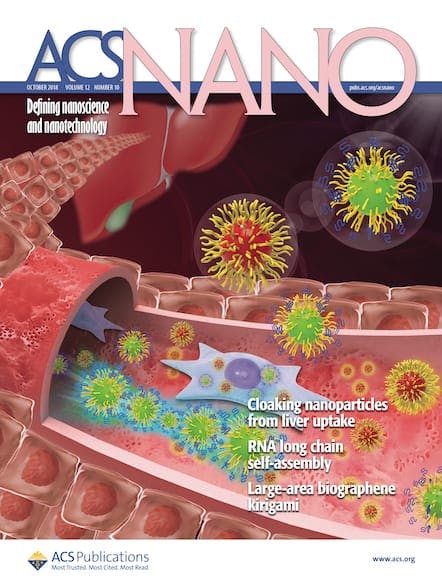When a journal adds a new associate editor, that change means more for readers than just a tweak to the masthead. New associate editors bring new experiences, new perspectives, and new ideas to their publications. Get to know some of ACS’s latest editors and learn what unique gifts they’ll be bringing to their respective journals. […]

Deji Akinwande, ACS Nano
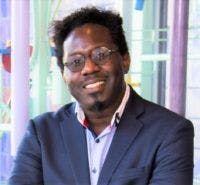
What is your research focus? What initially attracted you to your field?
I work primarily with nanomaterials such as 2D materials. My research objective is to translate basic scientific discoveries into engineering applications. As such, our research spans basic research and applied research covering fields of chemical, electrical, and mechanical engineering. We also conduct significant research into device science and physics.
What do you hope to bring to your journal?
I look forward to bring a fresh perspective and high quality editorial process in the publication and review cycle.
What are the major challenges facing your field today?
There are many manuscripts, which is generally a good thing. However, it becomes important, from an editorial point of view, to exhibit much prudence in deciding suitable works.
***
Liane Rossi, ACS Sustainable Chemistry & Engineering

What is your research focus? What initially attracted you to your field?
My research focus is green chemistry and catalysis and what attracts me to the field is the great impact of catalytic processes in our lives. Catalysis lies at the heart of the chemical industry, but is also the key for a sustainable future.
What do you hope to bring to your journal?
I hope to bring diversity and contribute with my expertise in green chemistry and catalysis.
What are the major challenges facing your field today?
Catalysis can make a wider impact on cleaner production, renewables, energy transition and mitigation of greenhouse gas emissions.
What do you think is the most interesting and/or important unsolved problem in your field?
I hope the field will contribute for the development of economically attractive processes for carbon dioxide capture and conversion towards a circular economy.
Do you have a recent paper in an ACS journal that you’d like to highlight?
I would highlight our paper in ACS Sustainable Chemistry & Engineering about a solid acid catalyst for clean esterification.
Reusable Heterogeneous Tungstophosphoric Acid-Derived Catalyst for Green Esterification of Carboxylic Acids
ACS Sustainable Chem. Eng. 2019, 7, 19, 15874–15883
DOI: 10.1021/acssuschemeng.9b01579
I would also like to highlight a paper in ACS Catalysis which was a collaboration between theory and experimental studies to disclose the reactivity of gold for selective hydrogenation of alkynes via the heterolytic activation of H2 at the gold-piperazine interface.
Accessing Frustrated Lewis Pair Chemistry through Robust Gold@N-Doped Carbon for Selective Hydrogenation of Alkynes
ACS Catal. 2018, 8, 4, 3516–3524
DOI: 10.1021/acscatal.8b00806
***
Tobias Erb, Biochemistry
What is your research focus? What initially attracted you to your field?
My research interests are the biochemistry and synthetic biology of carbon dioxide (CO2) capture and conversion. Research in our lab interfaces biology and chemistry and centers on the discovery, function and engineering of novel CO2 converting enzymes and their use in engineered and artificial photosynthesis, as well as the bottom-up design of synthetic chloroplasts and artificial cells.
What do you hope to bring to your journal?
My hope is to bring a systems and synthetic biological view to Biochemistry to further expand the journal’s portfolio and lead Biochemistry into a new and exciting future. Let’s build a new Biochemistry!
What are the major challenges facing your field today?
The biggest challenge is to turn biology from an analytical-descriptive into a synthetic-constructive discipline. How do we design and realize new-to-nature enzymes, synthetic pathways and artificial cells? We need to build to understand and will understand by building.
What do you think is the most interesting and/or important unsolved problem in your field?
The biggest challenge is to understand those principles that allow us to construct complex biochemical systems that we control in time and space from first principles.
Do you have a recent paper in an ACS journal that you’d like to highlight?
Awakening the Sleeping Carboxylase Function of Enzymes: Engineering the Natural CO2-Binding Potential of Reductases
J. Am. Chem. Soc. 2019, 141, 25, 9778–9782
DOI: 10.1021/jacs.9b03431
Anything else you’d like readers to know about you?
Science is about exploring the non-explored. I am excited to receive many exciting manuscripts that push the boundaries to move our field forward.
***
Claire Carmalt, Crystal Growth & Design
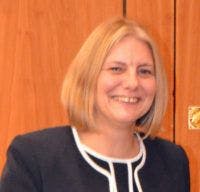
What is your research focus? What initially attracted you to your field?
Our research focusses on developing innovative new routes to technologically important inorganic materials including the synthesis of novel molecular precursors, deposition of films using chemical vapour, spray and atomic layer deposition, formation of superhydrophobic surfaces and deposition of transparent conducting oxide and photocatalytic thin films. The group has a strong interest in the synthesis and characterisation of novel molecular precursors for use in the deposition of thin films of materials especially metal oxides. The aim is to develop new highly volatile, non-toxic precursors, which are then used to grown thin films.
The group is involved in research in Aerosol Assisted Chemical Vapour Deposition (AACVD) including scale up development for industrial applications and combinatorial CVD. The development of transparent conducting oxides, photocatalysts and superhydrophobic paints are of key interest. My postdoctoral research at University of Texas at Austin with Professor Alan Cowley postdoctoral work, which involved the synthesis of novel precursors for thin film growth, stimulated my interest in materials chemistry and potentially having an impact on industrial processes.
What do you hope to bring to your journal?
Expertise in functional thin films particularly how the film growth conditions and techniques can lead to changes in structure, morphology and composition, and the resulting functional properties.
What are the major challenges facing your field today?
Major challenges in the field include sustainability, for example removing the reliance on fluorinated compounds to generate superhydrophobic surfaces and developing replacements for indium in transparent conducting oxides. In addition, scale up of materials for industrial applications and developing robust materials remains a significant challenge.
What do you think is the most interesting and/or important unsolved problem in your field?
Full industrial applications exploiting the properties of superhdyrophobic materials.
Do you have a recent paper in an ACS journal that you’d like to highlight?
Molecular Complexes Featuring Unsupported Dispersion-Enhanced Aluminum–Copper and Gallium–Copper Bonds
J. Am. Chem. Soc. 2020, 142, 47, 19874–19878
DOI: 10.1021/jacs.0c10099
***
Jeffrey Rimer, Crystal Growth & Design
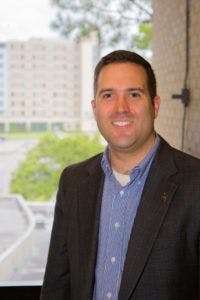
What is your research focus? What initially attracted you to your field?
My research focuses on a variety of crystalline materials. We have major efforts in the development of zeolite and metal oxide catalysts where we focus on aspects of synthesis, characterization, and catalyst testing. An underlying theme of these projects is mechanistic investigations of nucleation and growth where we find most of the materials are formed through nonclassical pathways. My research also extends to biomedical applications where we study a broad range of crystals (both inorganic and organic) involved in diseases such as kidney stones and malaria, as well as minerals implicated in scale. A major theme to these studies is the identification of molecular modifiers that can inhibit nucleation and crystal growth, or induce dissolution of existing crystals. To this end, we have discovered a number of highly effective molecules that have the potential to supplant current therapeutics on the market. I become fascinated with crystals at the start of my PhD where I worked on fundamental aspects of zeolite crystallization. The fact that crystals are present in almost all facets of everyday life makes them an important class of materials, but I have always been drawn to this subject based on the challenges associated with understanding how crystals grow and developing new methods to control these processes. To this day, crystals continue to fascinate me and drive my enthusiasm for learning more about their assembly.
What do you hope to bring to your journal?
I feel that my background in chemical engineering can bring a different perspective to the journal. Moreover, my hope is that I can help facilitate more submissions on topics such as porous materials, which include metal organic frameworks (MOFs), covalent organic frameworks (COFs), and zeolites. There is a lot of exciting work being done in these research areas, and I feel that Crystal Growth & Design would be a great destination for these studies.
What are the major challenges facing your field today?
The advent of nonclassical crystallization has created new opportunities to expand our understanding of crystal growth mechanisms; however, these pathways are often challenging to elucidate owing to the difficulties of capturing details of nucleation and growth at sufficient spatiotemporal resolution. Advancements in theoretical understanding of these complex pathways coupled with advancements in state-of-the-art instrumentation for characterizing crystals that growth through nonclassical routes are the two biggest challenges facing the field today.
What do you think is the most interesting and/or important unsolved problem in your field?
One of the most challenging problems facing materials that are derived from amorphous precursors is developing ways of classifying “amorphous” since it is evident there can be a range of local order that make these materials far more complex to characterize. The increasing list of crystals that involve two-step nucleation also presents many unsolved questions regarding the fundamental processes of nucleation. For crystals that grow in media containing diverse and complex growth units beyond monomers, there are many unanswered and interesting questions regarding how the nature of the growth unit can alter growth pathways; and this could open new avenues to both understand and control aspects of crystallization. Despite the tremendous progress that has been made in understanding mechanisms of crystal growth, there is still so much that we do not understand.
Do you have a recent paper in an ACS journal that you’d like to highlight?
There is a recent paper we published on the topic of struvite inhibition. Struvite is a component of kidney stones, but is also a common scale in many industrial applications. We found highly effective molecules that completely suppress nucleation and crystal growth through interesting mechanisms. Given that it is less common to suppress nucleation, we find this work to be of great interest from both a fundamental perspective as well as a practical angle given the potential of using these molecules in commercial processes.
Engaging a Battle on Two Fronts: Dual Role of Polyphosphates as Potent Inhibitors of Struvite Nucleation and Crystal Growth
Chem. Mater. 2020, 32, 19, 8672–8682
DOI: 10.1021/acs.chemmater.0c03180
Anything else you’d like readers to know about you?
I am highly active in service for the crystallization community. I have served as a chair for two Gordon Research Conferences on Nanoporous Materials & Their Applications (2021) and Crystal Growth & Assembly (2019). I am on the executive committees of the International Zeolite Association Council (Treasurer), the International Zeolite Association Synthesis Commission (Co-Chair), the American Associate for Crystal Growth, and the Association for Crystallization Technology.
***
Ashwin Patwardhan, Industrial Engineering & Chemistry Research
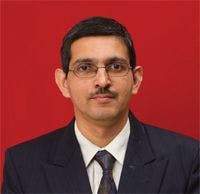
What is your research focus? What initially attracted you to your field?
My research focus is investigation of transport phenomena in multiphase flow in process equipment by a combination of experiments and Computational Fluid Dynamics. What attracted me to this field is the powerful central theme of solving the fundamental momentum, energy and mass conservation equations to diverse Engineering applications.
What do you hope to bring to your journal?
I hope to attract high quality research papers in the field of chemical engineering.
What are the major challenges facing your field today?
Major challenges in my field are high computational power required to undertake meaningful simulations at industrial scale and a unified mathematical description of the interphase forces in multiphase flows.
What do you think is the most interesting and/or important unsolved problem in your field?
Several actually, a unified description of interphase forces applicable in all situations, how turbulence affects these force terms, how turbulence is generated by the flow of dispersed phase, etc., in short, accurate modeling of two phase flows is critical to getting realistic answers from simulations.
***
Michael Baldea, Industrial Engineering & Chemistry Research
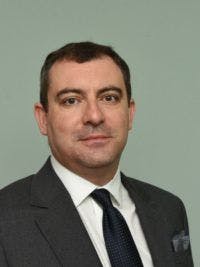
What is your research focus? What initially attracted you to your field?
I work in process systems engineering. My group works on chemical processes and energy systems, areas in which we try to address both theoretical challenges and practical applications, the latter often defined by our interactions with industry. This is a very rich and constantly evolving field, and offers a lot of opportunities of translational research, where theoretical developments are implemented in the real world.
What do you hope to bring to your journal?
I had the good fortune of spending some time working in industry prior to joining the University of Texas, so I think that I have a unique perspective on the scope, methods and ends of research in my field. I hope to use this to elevate the quality of the journal and its relevance to its readers, both in academia and in industry.
What are the major challenges facing your field today?
There are several challenges that we face, they are not necessarily unique to our field but may require unique solutions. For example, bridging the gap between academic research and industrial applications in the areas of process control, design optimization, production planning /scheduling is a constant challenge . Related to this, the training of the next generation of academics and practitioners, and capturing the knowledge of experienced practitioners who are retiring is an ongoing effort.
What do you think is the most interesting and/or important unsolved problem in your field?
Working towards considering all the time and space scales involved in a chemical process in a coherent manner. This means, e.g., simultaneously designing a material and the process it is used in, integrated production planning/scheduling and control, etc. Such integrated problems are almost invariably large-scale, highly nonlinear and poorly conditioned, and developing models and methods for addressing them remains an open question.
Do you have a recent paper in an ACS journal that you’d like to highlight?
Switching from Batch to Continuous Reactors Is a Trajectory Optimization Problem
Ind. Eng. Chem. Res. 2019, 58, 30, 13718–13736
DOI: 10.1021/acs.iecr.9b01126
Co-authored with Joseph Costandy and Tom Edgar, this paper provides a comprehensive analysis of the merits of switching from batch to continuous reactors, a pressing question in several industries, including pharmaceuticals.
***
Suazette Mooring, Journal of Chemical Education

What is your research focus? What initially attracted you to your field?
My research focuses on chemistry education, with particular interest in students’ reasoning around big ideas in chemistry, students’ experiences in the chemistry laboratory and the implementation and assessment of evidence-based teaching practices in large enrollment Organic Chemistry courses. I was introduced to this field as a postdoctoral fellow. I was fascinated that an entire world of literature on the teaching and learning of chemistry existed. Some of it confirmed what I had come to understand from my own experience teaching and some just gave me so many more questions that turned into research ideas and projects.
What do you hope to bring to your journal?
I hope to bring my expertise organic chemistry and chemistry education together to help provide authors on guidance on how to best present their work to chemistry education practitioners and to provide assessments that can highlight the benefits of their work or study to the readers.
What are the major challenges facing your field today?
Over the years, chemistry education researchers have uncovered the student challenges to learning chemistry and have also assessed several practices that can overcome some of those challenges. However, translating those research-based understandings into practice has been slow. Figuring out how to best do this is a major challenge.
What do you think is the most interesting and/or important unsolved problem in your field?
We know from many research studies that active learning, in a general sense, works to improve student outcomes. However, we do not have good sense as to why they work, who the work for and which components contribute to the positive outcomes of active learning. If we can truly understand these components we can probably maximize the benefits of active learning strategies in the chemistry classroom.
Do you have a recent paper in an ACS journal that you’d like to highlight?
This paper is an example of using concepts of green chemistry and creating a case-based activity for students in underserved high schools. The activity was created as part of the Bio-Bus program at Georgia State University that brings creative science module to K-12 students.
Cleaning Our World through Green Chemistry: Introducing High School Students to the Principles of Green Chemistry Using a Case-Based Learning Module
J. Chem. Educ. 2021, XXXX, XXX, XXX-XXX
DOI: 10.1021/acs.jchemed.9b00312
***
Ramesh Gardas, Journal of Chemical & Engineering Data

What is your research focus? What initially attracted you to your field?
My research group focuses on developing non-conventional and environmentally benign solvent systems, including ionic liquids and deep eutectic solvents. Apart from an opportunity to develop sustainable solvent systems as an alternative to volatile organic solvents, I am attracted to this field predominantly due to ample feasibilities in the design of application-specific solvent systems by the judicious selection of chemical structure, composition, and reaction conditions. My primary interests are in generating extensive databases on experimental thermophysical properties, phase behavior, and structure-composition-property correlations of novel solvent systems useful in refrigeration, separation science, and crude oil industry.
What do you hope to bring to your journal?
Moderating the connection for thermodynamic data of new chemical systems developed in academic laboratories with the industry requirement to meet the growing demand for novel chemical processes and products. Further, substantial efforts will be made for a thorough understanding of the ‘Science’ and the ‘Technology’ part of thermodynamic data by encouraging the valuable, meaningful, high-quality, and contemporary thermodynamic data essential for advancing the chemical sciences and chemical technologies.
What are the major challenges facing your field today?
There are three significant challenges associated with handling thermophysical data:
- Resenting uncertainty in data
- Comparison of data with literature
- Avoiding inconsistency in data.
In the first case, combined expanded uncertainty presented in experimental thermophysical data should include uncertainty associated with measurement technique, sample purity, and contributions resulting from uncertainty propagation from variables and constraints to a property. Similarly, uncertainty associated with model selection and model parameters should be considered in presenting the combined expanded uncertainty of predicted data.
In the second case, data should be clearly defined with associated experimental conditions, variables, and constrains. This is essential and helpful when authors need to validate their methods/data by comparisons with literature data obtained at varied experimental conditions, techniques, varied sample purity/ concentration, choice of reference for calibration, etc.
In the third case, typographical errors in data and transposition of columns in data tables must be avoided, as this will lead to the publication of incorrect data and, later, to large discrepancies while comparison with new data obtained for similar systems at similar conditions.
What do you think is the most interesting and/or important unsolved problem in your field?
Development of advanced experimental and computational methods for generating the rapid, facile, accurate, in-expensive, and reliable thermodynamic properties of multi-component/multi-phase novel chemical systems over a wide range of compositions and conditions; and to bridge the gap between academic curiosity and industrial requirements.
Do you have a recent paper in an ACS journal that you’d like to highlight?
I feel honored to be part of two special issues on “Emerging Investigators” and “JCED’s High Impact Authors,” recently published in Journal of Chemical & Engineering Data.
Celebrating JCED’s High Impact Authors
J. Chem. Eng. Data 2019, 64, 11, 4607–4610
DOI: 10.1021/acs.jced.9b01050
Introducing the “Emerging Investigators” Special Issue
J. Chem. Eng. Data 2018, 63, 7, 2335–2340
DOI: 10.1021/acs.jced.8b00507
Anything else you’d like readers to know about you?
I have more than 20-years of research and 10-years of teaching experience. My research group strives to design the task-specific novel solvent systems involving ionic liquids and to provide an important insight into physical chemistry to regulate their properties for varied technological applications. So far, I have guided 11 Ph.D. and 15 M.Sc. project students, co-authored 4 patents, 4 book-chapters, and published more than 165 research publications, which received more than 6200 citations with h-index = 38. I have delivered about 165 invited talks, oral presentations, guest lectures, and keynote addresses.
I like to learn new languages since I started learning Gujarati as a second language in Telugu medium primary school and Sanskrit in higher-secondary school in Surat, India. I reasonably know Telugu, Gujarati, Hindi, Marathi, and Portuguese.
***
Ronny Pini, Journal of Chemical & Engineering Data

What is your research focus? What initially attracted you to your field?
I am a chemical engineer with a strong interest in the physics of multiphase flow and phase-behaviour in porous media, including adsorption equilibria. My research focuses on advancing our understanding of these fundamental processes by means of experiments and computational methods with application ranging from geo-energy to industrial gas separations. The interest in technologies for Carbon Capture and Storage has largely driven the choice of my Ph.D. topic fifteen years ago. This “attraction” stuck with me ever since.
What do you hope to bring to your journal?
As a chemical engineer, I believe that attempts to improve materials and processes must rely on high performance measurement and modelling of the relevant thermophysical properties at the appropriate conditions. It turns out that this largely coincides with the journal’s mission. My hope is therefore to maintain – and possibly enhance – the journal’s reputation in the thermophysical properties field, with particular focus on adsorption equilibria.
What are the major challenges facing your field today?
Climate change is the single biggest threat to present and future generations, requiring sustainable solutions for energy production and consumption on an unprecedented scale. New technologies will need to be deployed to realise this energy transition with key challenges associated with optimising the performance, stability and lifetime of materials and processes.
What do you think is the most interesting and/or important unsolved problem in your field?
Industrial chemical processes include transient and spatially localised phenomena, which are often “hidden” within porous solids, including catalysts, adsorbents and rocks. The ability to probe these phenomena in the operating environment across the relevant time and length scales underpins many technological challenges associated with the energy transition. This includes for instance the design of more selective and low energy separation processes – from the capture of carbon dioxide from dilute emissions (including air) to the production of clean water.
Do you have a recent paper in an ACS journal that you’d like to highlight?
Digital Adsorption: 3D Imaging of Gas Adsorption Isotherms by X-ray Computed Tomography
J. Phys. Chem. C 2017, 121, 48, 26903–26915
DOI: 10.1021/acs.jpcc.7b09836
In this paper we demonstrate a novel ability to measure gas adsorption isotherms in nanoporous materials by X-ray Computed Tomography. The coupling between the physisorption technique and three-dimensional imaging represents an exciting development in the field of adsorptive characterization of porous solids, enabling a deeper understanding of heterogeneities over multiple length scales. Such insight is needed to formulate solids into shaped structures that achieve superior performances in terms of functionality and resistance.
Anything else you’d like readers to know about you?
In my free time I do lots of sport, including running, cycling and yoga.
***
Cara Schwarz, Journal of Chemical & Engineering Data

What is your research focus? What initially attracted you to your field?
My research focus is the generation, prediction and use of thermodynamic data in chemical engineering applications. In particular, I focus on systems with complex molecular interactions such as hydrogen bonding, polar interactions and molecular asymmetry with recent projects including the studying the thermodynamics of water, alcohol, and entrainer systems for the dehydration of alcohols and carbon dioxide, alcohol, and alkane systems for application in the production of surfactants. I particularly enjoy studying these complex systems and their impact on separation processes my research focus takes a strong fundamental knowledge and combines it with applications in chemical engineering field.
What do you hope to bring to your journal?
The main focus of my research is measurement of thermodynamic data for chemical engineering applications with secondary foci being the thermodynamic modelling of the measured (and other) data and the application thereof in the chemical engineering field. I believe I will be able to contribute significantly through my strong experimental background and knowledge combined with my thermodynamic modelling and process application knowledge.
What are the major challenges facing your field today?
All chemical engineering processes require fundamental thermodynamic data. While this data are vital for the development of new technologies they are often not regarded as part of the forefront of the development of new technologies. The need and impact of thermodynamic data and its prediction is therefore often underestimated. A need therefore exists to create interest and excitement surrounding the field of thermodynamic data and its prediction.
What do you think is the most interesting and/or important unsolved problem in your field?
At present thermodynamic models are not able to simultaneously predict vapor-liquid and liquid-liquid equilibrium with the same model parameters (and interaction parameters). As such prediction of vapor-liquid-liquid equilibrium is also difficult, if not impossible. Significant development work is required to address this problem, including a deeper understanding of the underlying molecular interactions. While the majority of the development work will involve thermodynamic model development, at the base of the model development is the need for high quality phase behavior data.
Do you have a recent paper in an ACS journal that you’d like to highlight?
A Quadrupolar SAFT-VR Mie Approach to Modeling Binary Mixtures of CO2 or Benzene with n-Alkanes or 1-Alkanols
J. Chem. Eng. Data 2020, 65, 12, 5778–5800
DOI: 10.1021/acs.jced.0c00705
High Pressure Vapor–Liquid Equilibrium Data for the Quaternary Carbon Dioxide + 1-Decanol + 3,7-Dimethyl-1-octanol + n-Dodecane System
J. Chem. Eng. Data 2019, 64, 12, 5785–5796
DOI: 10.1021/acs.jced.9b00740
Role of Solvent Properties in the High-Pressure Phase Behavior of (Ethylene + Comonomer + n-Hexane + LLDPE) Systems
J. Chem. Eng. Data 2019, 64, 10, 4525–4545
DOI: 10.1021/acs.jced.9b00586
***
Tanja Gaich, Organic Letters
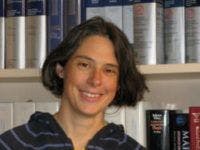
What is your research focus? What initially attracted you to your field?
My group is focused on the total synthesis of natural products, especially those congeners possessing a novel carboskeleton, which ideally exhibit an interesting biological activity. I am convinced, that novel molecular architectures not only serve as a testing ground for methodologies, but more importantly spark methodology development itself when embarking to the synthetic endeavor. As an undergraduate I was immediately drawn to complex molecule synthesis for several reasons:
- It requires a broad knowledge of reactions and their scope and limitations.
- It requires strategic thinking and the ability to orchestrate these reactions appropriately.
- It gives the scientist a lot of room for creativity.
What do you hope to bring to your journal?
I hope that, with my expertise, Organic Letters will further be an attractive journal for colleagues in the field organic synthesis and that I can contribute to further increase the journal’s standing in the field. Furthermore, I hope that also colleagues of closely related fields will appreciate the beauty of complex molecule synthesis and get inspired by these works.
What are the major challenges facing your field today?
The major challenges of complex molecule synthesis are first and foremost the development of creative new ways to assemble the most complex architectures to increase the practicality of synthetic routes. This involves shortening of the overall synthetic routes by inventing new reactions, but also involves the ability to perform reactions on complex architectures on gram-scale.
What do you think is the most interesting and/or important unsolved problem in your field?
Increase the practicality of complex molecule synthesis to the extent that it expands into chemical industry on a regular base.
Do you have a recent paper in an ACS journal that you’d like to highlight?
Enantioselective Synthesis of Cyclohepta[b]indoles via Pd-Catalyzed Cyclopropane C(sp3)–H Activation as a Key Step
Org. Lett. 2019, 21, 18, 7370–7374
DOI: 10.1021/acs.orglett.9b02687
***
